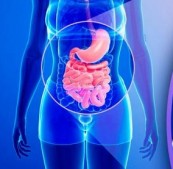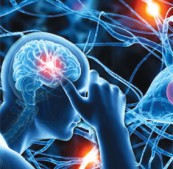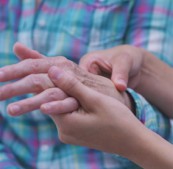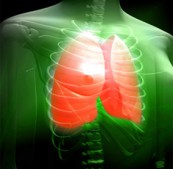Amenorrhoea

Amenorrhea is the absence of a menstrual period in a woman of reproductive age. Physiological states of amenorrhoea are seen, most commonly, during pregnancy and lactation (breastfeeding), the latter also forming the basis of a form of contraception known as the lactational amenorrhoea method. Outside the reproductive years, there is an absence of menses during childhood and after menopause. Amenorrhoea is a symptom with many potential causes
Brief with types
- Primary amenorrhoea
Primary amenorrhoea is the absence of menstruation in a woman by the age of 16. As pubertal changes precede the first period, or menarche, female children by the age of 14 who still have not reached menarche, plus having no sign of secondary sexual characteristics, such as thelarche or pubarche—thus are without evidence of initiation of puberty—are also considered as having primary amenorrhoea.
- Secondary amenorrhea
Secondary amenorrhoea is where established menstruation has ceased—for three months in a woman with a history of regular cyclic bleeding, or nine months in a woman with a history of irregular periods. This usually happens to women aged 40–55. However, adolescent athletes are more likely to experience disturbances to the menstrual cycle than athletes of any other age.
Amenorrhoea may cause serious pain in the back near the pelvis and spine. This pain has no cure, but can be relieved by a short course of progesterone to trigger menstrual bleeding.
Signs & Symptoms(Lakshana):
The main sign of amenorrhea is the absence of menstrual periods. Depending on the cause of amenorrhea, you might experience other signs or symptoms along with the absence of periods, such as:
- Milky nipple discharge
- Hair loss
- Headache
- Vision changes
- Excess facial hair
- Pelvic pain
- Acne
Causes(Nidana):
Amenorrhea can occur for a variety of reasons. Some are normal during the course of a woman's life, while others may be a side effect of medication or a sign of a medical problem.
Natural Amenorrhea
During the normal course of your life, may experience amenorrhea for natural reasons, such as:
- Pregnancy
- Breast-feeding
- Menopause
- Contraceptives
Some women who take birth control pills may not have periods. Even after stopping oral contraceptives, it may take some time before regular ovulation and menstruation return. Contraceptives that are injected or implanted also may cause amenorrhea, as can some types of intrauterine devices.
Medications
Certain medications can cause menstrual periods to stop, including some types of:
- Antipsychotics
- Cancer chemotherapy
- Antidepressants
- Blood pressure drugs
- Allergy medications
Lifestyle Factors
Sometimes lifestyle factors contribute to amenorrhea, for instance:
- Low body weight. Excessively low body weight — about 10 percent under normal weight — interrupts many hormonal functions in your body, potentially halting ovulation. Women who have an eating disorder, such as anorexia or bulimia, often stop having periods because of these abnormal hormonal changes.
- Excessive exercise. Women who participate in activities that require rigorous training, such as ballet, may find their menstrual cycles interrupted. Several factors combine to contribute to the loss of periods in athletes, including low body fat, stress and high energy expenditure.
- Stress. Mental stress can temporarily alter the functioning of your hypothalamus — an area of your brain that controls the hormones that regulate your menstrual cycle. Ovulation and menstruation may stop as a result. Regular menstrual periods usually resume after your stress decreases.
Hormonal Imbalance
Many types of medical problems can cause hormonal imbalance, including:
- Polycystic ovary syndrome (PCOS). PCOS causes relatively high and sustained levels of hormones, rather than the fluctuating levels seen in the normal menstrual cycle.
- Thyroid malfunction. An overactive thyroid gland (hyperthyroidism) or underactive thyroid gland (hypothyroidism) can cause menstrual irregularities, including amenorrhea.
- Pituitary tumor. A noncancerous (benign) tumor in your pituitary gland can interfere with the hormonal regulation of menstruation.
- Premature menopause. Menopause usually begins around age 50. But, for some women, the ovarian supply of eggs diminishes before age 40, and menstruation stops.
Structural Problems
Problems with the sexual organs themselves also can cause amenorrhea. Examples include:
- Uterine scarring. Asherman's syndrome, a condition in which scar tissue builds up in the lining of the uterus, can sometimes occur after a dilation and curettage (D&C), cesarean section or treatment for uterine fibroids. Uterine scarring prevents the normal buildup and shedding of the uterine lining.
- Lack of reproductive organs. Sometimes problems arise during fetal development that leads to a girl being born without some major part of her reproductive system, such as her uterus, cervix or vagina. Because her reproductive system didn't develop normally, she can't have menstrual cycles.
- Structural abnormality of the vagina. An obstruction of the vagina may prevent visible menstrual bleeding. A membrane or wall may be present in the vagina that blocks the outflow of blood from the uterus and cervix.
Treatments :
Ayurveda Treatments mainly divided into two segments.
- Samshodhan
- Shaman
Both these types of chikitsa work on vitiated dosha, dhatus and established physiology of sharir. Here ‘Nashtaratav’ has vitiation of vata, kapha pitta doshas and can consider kshaya of rasa and rakta dhatu. Vitiation of dosha & dhatu is also depends upon agnimandya. All the above points do have an effect on Chikitsa of ‘Nashtartav.’ Acharya Charak described all gynecological disorder in chikitsas than in the form of ‘Yonivyapad’.
Additional Treatment
Lifestyle changes and Yoga therapies: - Fish, kulattha, sour substances (kanji) til, mash, cow urine, butter milk mixed with half water, curd and shukt should be used in diet & drinks
Yogic management of amenorrhea are very important for women experiencing amenorrhea. Most importantly this includes rest and minimizes the amount of things or stresses that are apart of their everyday lives.
- Padmasan
- Halasan
- Dhanurasan
- Saravangasan
- Shalabhasan
- Bhujangasan
- Paschimottanasan
Prevention
Primary amenorrhea caused by anatomic abnormalities cannot be prevented. You can prevent some forms of secondary amenorrhea. Take the following steps:
- Eat a balanced diet that meets your recommended daily nutritional needs.
- Exercise moderately, but not excessively, to maintain an ideal body weight and muscle tone.
- Find healthy outlets for emotional stress and daily conflicts.
- Balance work, recreation and rest.
- Avoid excessive alcohol consumption and cigarette smoking.





